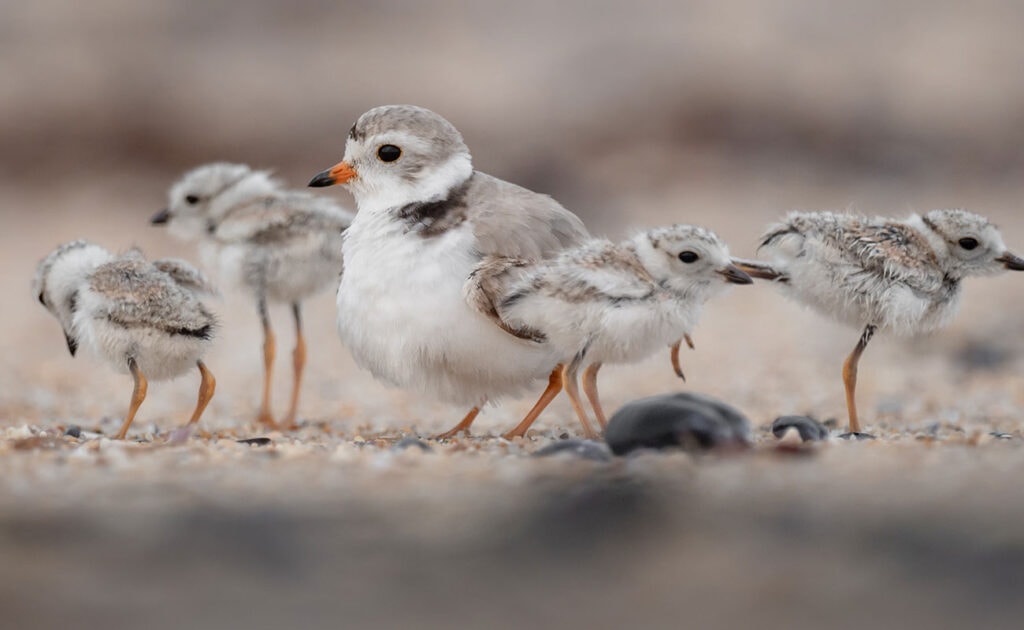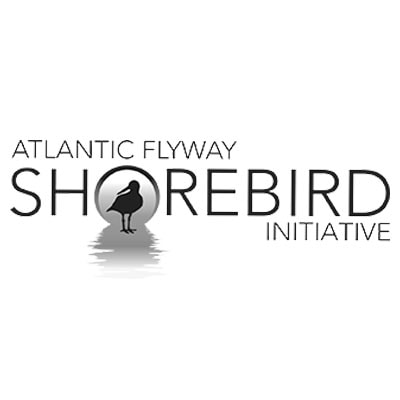How to have a bird-friendly visit to the beach

Leash Your Dog in the Buffer Zone
Even friendly dogs can unintentionally frighten beach nesting birds, posing a risk to their safety. When dogs roam freely, birds perceive them as threats, causing them to abandon their nests and leave their young vulnerable to potential predators such as crows or foxes. To help protect shorebirds, please leash your dog within the designated ‘buffer zone’ as you approach restricted areas. This simple act helps maintain a safe distance, ensuring that no dogs cross into the restricted area, helping safeguard the Piping Plovers and Least Terns as they tend to their eggs and raise their chicks.

Dog Restrictions at Scarborough Beaches
From April 1st through Labor Day, Higgins Beach has a restricted dog area that goes from Champion St to the Spurwink River. We are encouraging dog owners to leash their dogs at the ‘buffer zone’ between Vesper St and Champion St to help ensure no dogs cross into the restricted area where Piping Plovers and Least Terns nest and raise their young.
Click here to see detailed information for dog owners regarding dog restrictions at Scarborough beaches.

Higgins Beach buffer zone

Piping Plover and chicks
An Important Place for Birds
Higgins Beach is an incredible beach, not only for recreation like surfing, fishing, sun bathing, or swimming, but to observe all kinds of shorebirds. Higgins hosts one of Maine’s only beach nesting colonies of Least Terns as well as 4-6 pairs of nesting Piping Plovers. Other nesting bird species are Spotted Sandpiper and Willet. In the spring and fall you can watch large mixed flocks of migrating Semipalmated Sandpipers, Semipalmated Plovers, Sanderlings, Ruddy Turnstones, and Red Knots resting and refueling before continuing their long journey between the arctic and the tropics.
If you are on the beach and have questions about the birds, odds are high that one of our many volunteers is out there and can show the birds to you!

Piping Plover chicks at Popham Beach | Maine Audubon

Piping Plover and Least Tern Recovery Project | Sarah Geisler, Maine Audubon
Activities that seem harmless, like kids chasing birds, can actually cause a lot of distress to shorebirds. Next time you are at the beach, watch out for these signs that a bird is disturbed:
Did the bird fly away when you approached it?
Did the bird stop feeding and start walking away or look at you on alert?
Did the bird call out or act like it was injured to draw you away from its young?
If you noticed any of these bird behaviors, then you are probably too close. Try rounding your path to walk farther around the flock or the individual bird.
Home Sweet Home
Reducing dog disturbance of shorebirds
Shorebirds face many threats including loss of habitat, hunting, predation, climate change, and human disturbance that keeps them from the food they need to survive.
Contact Information
Laura Williams, Wildlife Biologist
Maine Audubon
plovertern@maineaudubon.org
Glennis Chabot, Higgins Beach Volunteer Coordinator
glennischabot@gmail.com
Learn more about Maine Audubon’s Coastal Birds Project and Maine Audubon’s Pets for Plovers
Visit the Town of Scarborough website to learn more about Piping Plovers, how to volunteer, and other information for dog owners.






